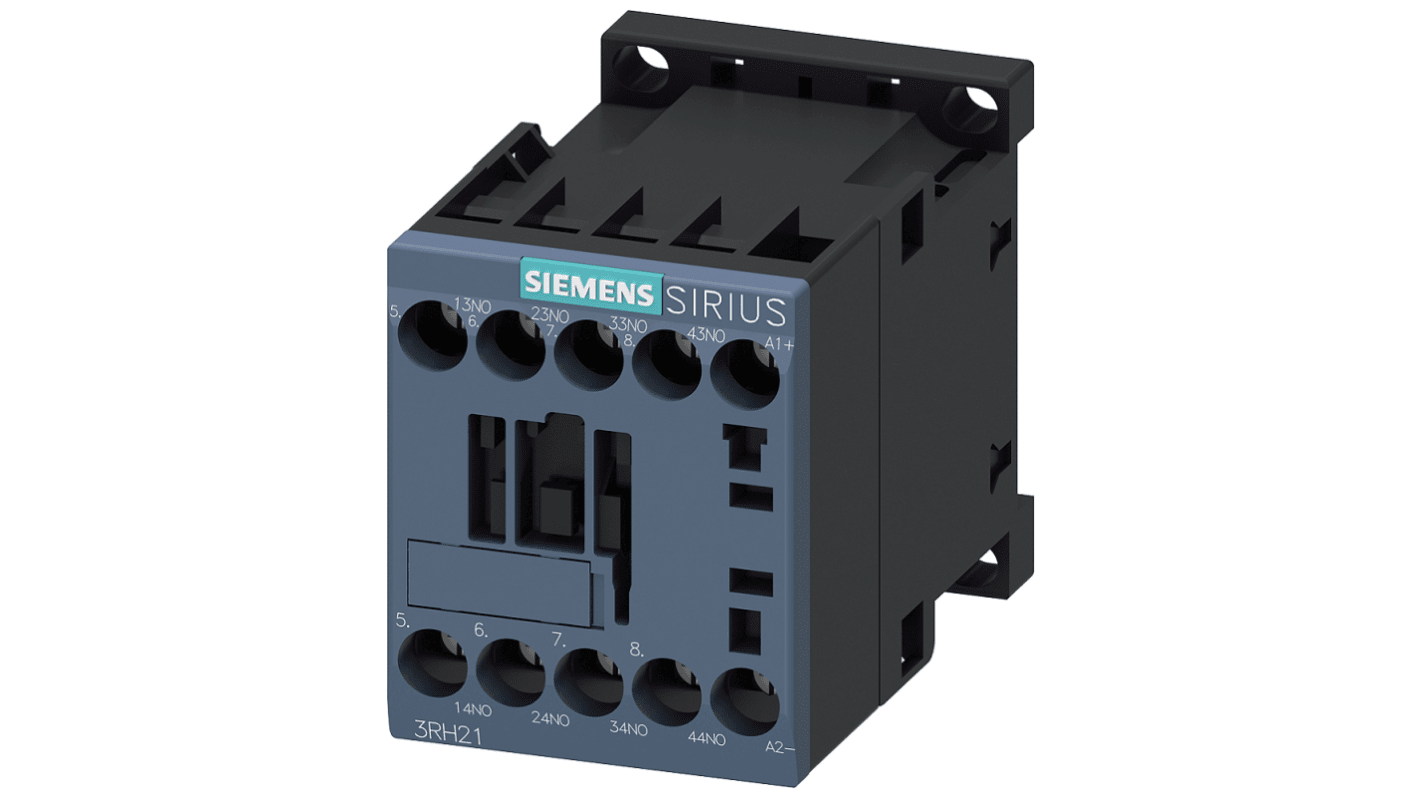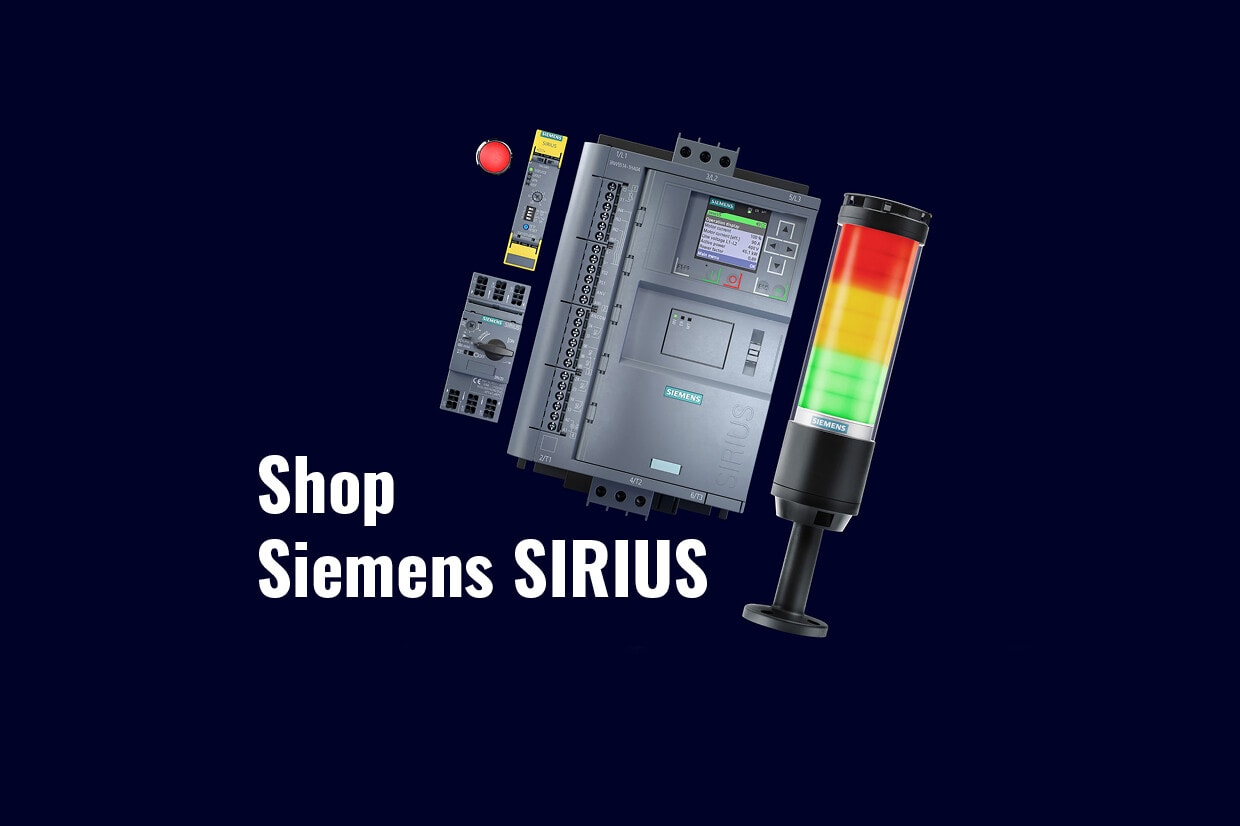Siemens SIRIUS 3RH2 Contactor Relay, 24 V dc Coil, 4-Pole, 10 A, 4NO, 690 V ac
- RS Stock No.:
- 213-1003
- Mfr. Part No.:
- 3RH2140-1HB40
- Brand:
- Siemens

Subtotal (1 unit)*
£34.08
(exc. VAT)
£40.90
(inc. VAT)
FREE delivery for orders over £50.00
In Stock
- 5 unit(s) ready to ship
- Plus 1 unit(s) ready to ship from another location
Need more? Click ‘Check delivery dates’ to find extra stock and lead times.
Units | Per unit |
|---|---|
| 1 + | £34.08 |
*price indicative
- RS Stock No.:
- 213-1003
- Mfr. Part No.:
- 3RH2140-1HB40
- Brand:
- Siemens
Specifications
Technical Reference
Legislation and Compliance
Product Details
Find similar products by selecting one or more attributes.
Select all | Attribute | Value |
|---|---|---|
| Brand | Siemens | |
| Coil Voltage | 24 V dc | |
| Number of Poles | 4 | |
| Contact Voltage Rating | 690 V ac | |
| Contact Current Rating | 10 A | |
| Range | SIRIUS | |
| Series | 3RH2 | |
| Normal State Configuration | 4NO | |
| Number Of Auxiliary Contacts | 4 | |
| Auxiliary Contact Configuration | 4NO | |
| Terminal Type | Screw | |
| Length | 57.5mm | |
| Width | 45mm | |
| Depth | 73mm | |
| Minimum Operating Temperature | -25°C | |
| Load Current | 10A | |
| Mounting Style | DIN Rail | |
| Control Voltage | 24 V dc | |
| Maximum Operating Temperature | +60°C | |
| Load Voltage | 690V ac | |
| Select all | ||
|---|---|---|
Brand Siemens | ||
Coil Voltage 24 V dc | ||
Number of Poles 4 | ||
Contact Voltage Rating 690 V ac | ||
Contact Current Rating 10 A | ||
Range SIRIUS | ||
Series 3RH2 | ||
Normal State Configuration 4NO | ||
Number Of Auxiliary Contacts 4 | ||
Auxiliary Contact Configuration 4NO | ||
Terminal Type Screw | ||
Length 57.5mm | ||
Width 45mm | ||
Depth 73mm | ||
Minimum Operating Temperature -25°C | ||
Load Current 10A | ||
Mounting Style DIN Rail | ||
Control Voltage 24 V dc | ||
Maximum Operating Temperature +60°C | ||
Load Voltage 690V ac | ||
- COO (Country of Origin):
- DE
Siemens 3RH2 Series Contactor Relay, 24V DC Control Voltage, 10A Current Rating - 3RH2140-1HB40
This contactor relay is a reliable solution for switching auxiliary circuits within various electrical applications. Designed with four poles, it operates at a control voltage of 24V DC. The compact dimensions—57.5mm in length, 45mm in width, and 73mm in depth—allow for easy installation on a DIN rail.
Features & Benefits
• Supports a contact voltage rating of up to 690V AC
• Auxiliaries configured with four NO contacts enhance versatility
• Designed for high-frequency switching at 10,000 operations per hour
• Screw terminal connections ensure secure and flexible wiring
• Auxiliaries configured with four NO contacts enhance versatility
• Designed for high-frequency switching at 10,000 operations per hour
• Screw terminal connections ensure secure and flexible wiring
Applications
• Used primarily for controlling motors and handling auxiliary circuits
• Suitable for within PLC environments
• Essential in electrical panels for automation tasks
• Utilised in high voltage settings to enhance circuit protection
• Suitable for within PLC environments
• Essential in electrical panels for automation tasks
• Utilised in high voltage settings to enhance circuit protection
How does the temperature range affect the relay's performance?
Operating in temperatures from -25°C to +60°C ensures that the relay performs effectively in diverse environmental conditions, making it suitable for various industrial settings.
What is the significance of the mechanical life of 30 million cycles?
A mechanical life of 30 million cycles signifies long-lasting durability and reduces the frequency of replacements, leading to decreased maintenance costs in operational environments.
What voltage do the relay contacts operate at for AC and DC applications?
The relay supports a contact current rating of 10A for both AC and DC applications, with varying specifications depending on the voltage used. For instance, the relay can handle 10A at 24V DC or up to 1A at 690V AC.
How does the relay facilitate integration into existing systems?
The DIN rail mounting style and screw terminal connections simplify the integration process, allowing for quick installation and compatibility with standard automation setups.

